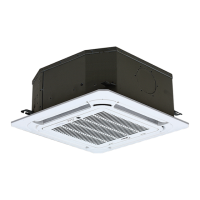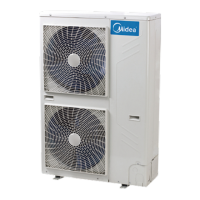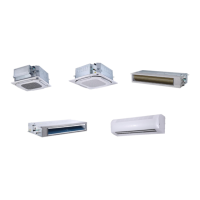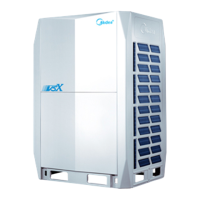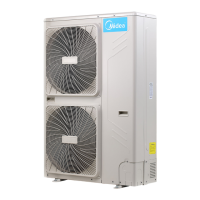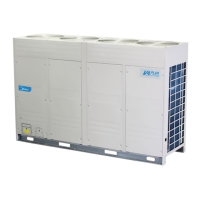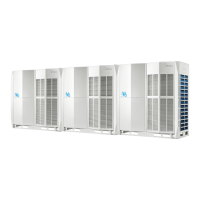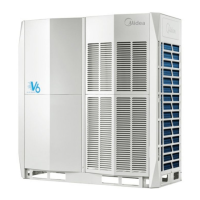Figure 3-8.3: Case 1: Tsh=Tsc
b) 0<Tsc-Tsh<3°C
When the indoor ambient temperature(T1) is below Tsh, the indoor unit run in heating mode.
When the indoor ambient temperature(T1) is arrives Tsh+1°C, the indoor unit is heating thermostat OFF.
When the indoor ambient temperature(T1) is arrives Tsc+1.5°C, the indoor unit is cooling thermostat ON.
Case 2:
Tsc= 26°C, Tsh=24°C
If the indoor unit operates cooling mode and when indoor ambient drops to 24.5°C, the indoor unit will change to heating
mode; if the indoor unit operates heating mode and when indoor ambient rises to 27.5°C, the indoor unit will change to
cooling mode.
c) Tsc-Tsh≥3°C
When the indoor ambient temperature(T1) is below Tsh, the indoor unit run in heating mode.
When the indoor ambient temperature(T1) is arrives Tsh+1°C, the indoor unit is heating thermostat OFF.
When the indoor ambient temperature(T1) is arrives Tsc, the indoor unit is cooling thermostat ON.
Case 3:
Tsc= 26°C, Tsh=22°C
If the indoor unit operates cooling mode and when indoor ambient drops to 22°C, the indoor unit will change to heating
mode; if the indoor unit operates heating mode and when indoor ambient rises to 26°C, the indoor unit will change to
cooling mode.
The default minimum time requirement for mode change is 15min. 30min, 60min and 90min can be set by wired controller
with bi-directional communication function.
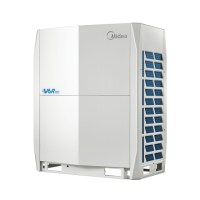
